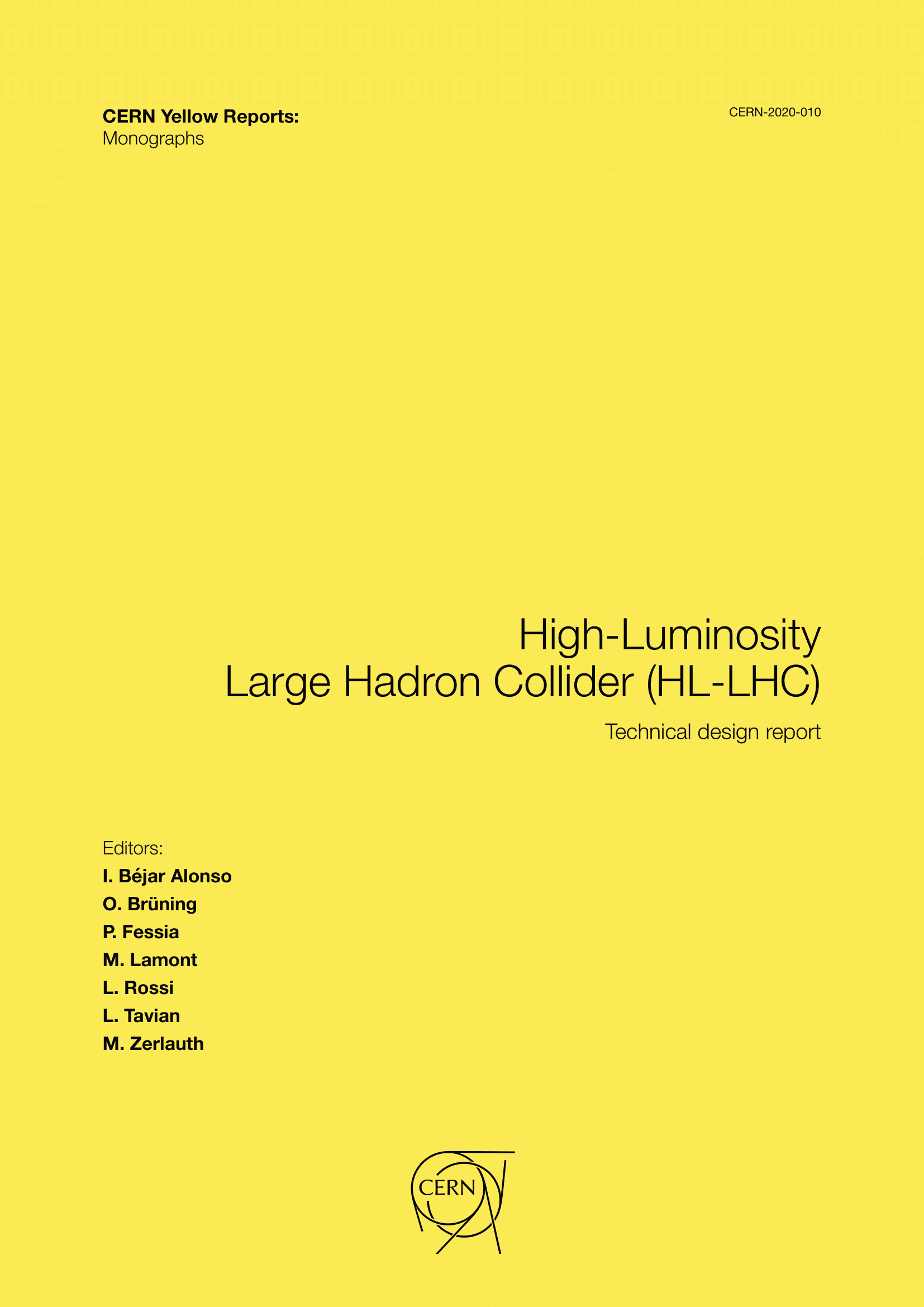Vol. 10 (2020): High-Luminosity Large Hadron Collider (HL-LHC): Technical design report

Editors: I. Béjar Alonso, O. Brüning, P. Fessia, M. Lamont, L. Rossi, L. Tavian, M. Zerlauth
The Large Hadron Collider (LHC) is one of the largest scientific instruments ever built. Since opening up a new energy frontier for exploration in 2010, it has gathered a global user community of about 9000 scientists working in fundamental particle physics and the physics of hadronic matter at extreme temperature and density. To sustain and extend its discovery potential, the LHC will need a major upgrade in the 2020s. This will increase its instantaneous luminosity (rate of collisions) by a factor of five beyond the original design value and the integrated luminosity (total number of collisions) by a factor ten. The LHC is already a highly complex and exquisitely optimised machine so this upgrade must be carefully conceived and will require new infrastructures (underground and on surface) and over a decade to implement. The new configuration, known as High Luminosity LHC (HL-LHC), relies on a number of key innovations that push accelerator technology beyond its present limits. Among these are cutting-edge 11–12 Tesla superconducting magnets, compact superconducting cavities for beam rotation with ultra-precise phase control, new technology and physical processes for beam collimation and 100 metre-long high-power superconducting links with negligible energy dissipation, all of which required several years of dedicated R&D effort on a global international level.
The present document describes the technologies and components that will be used to realise the project and is intended to serve as the basis for the detailed engineering design of the HL-LHC.
ISBN 978-92-9083-586-8 (paperback), ISBN 978-92-9083-587-5 (PDF).
